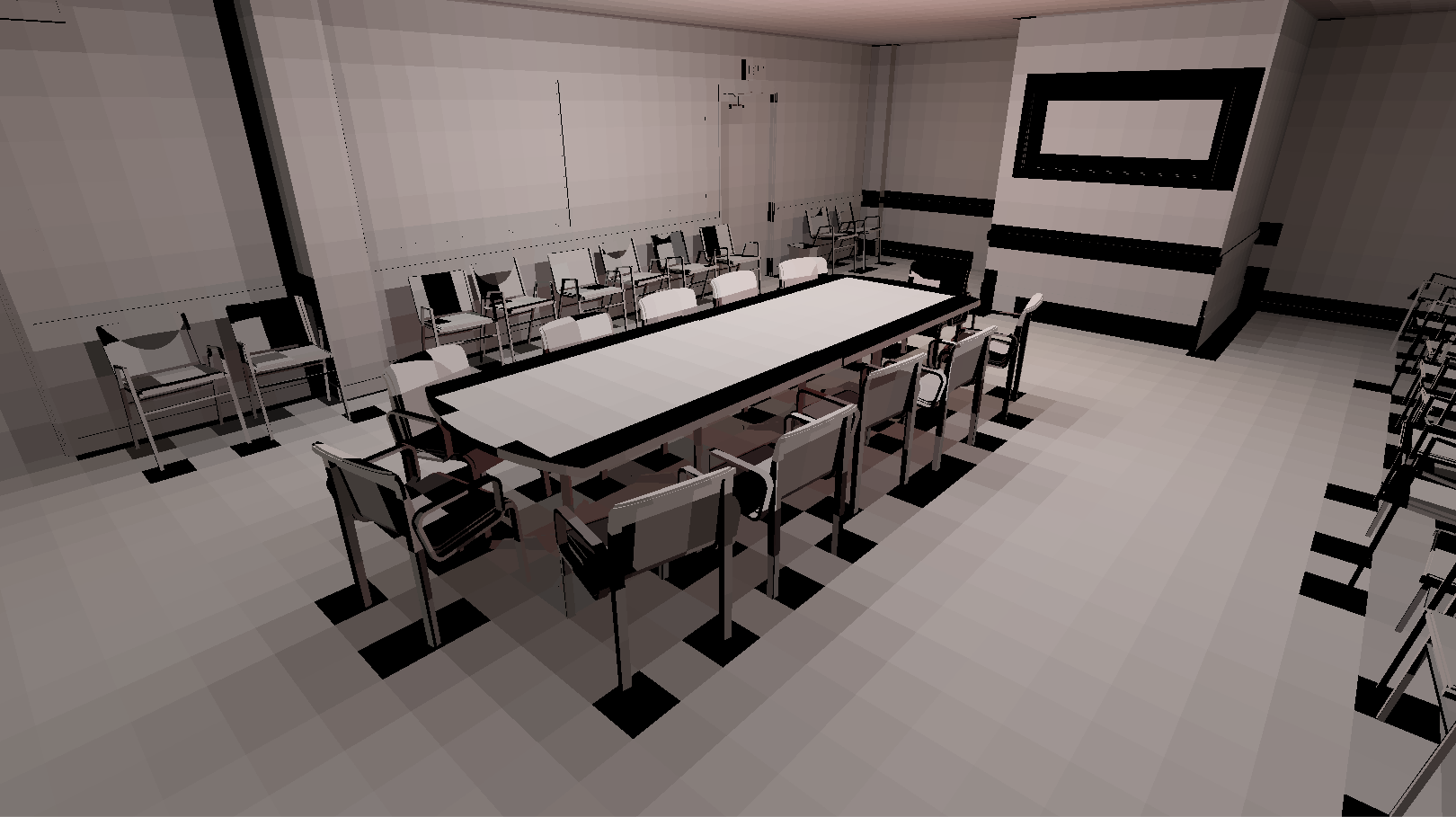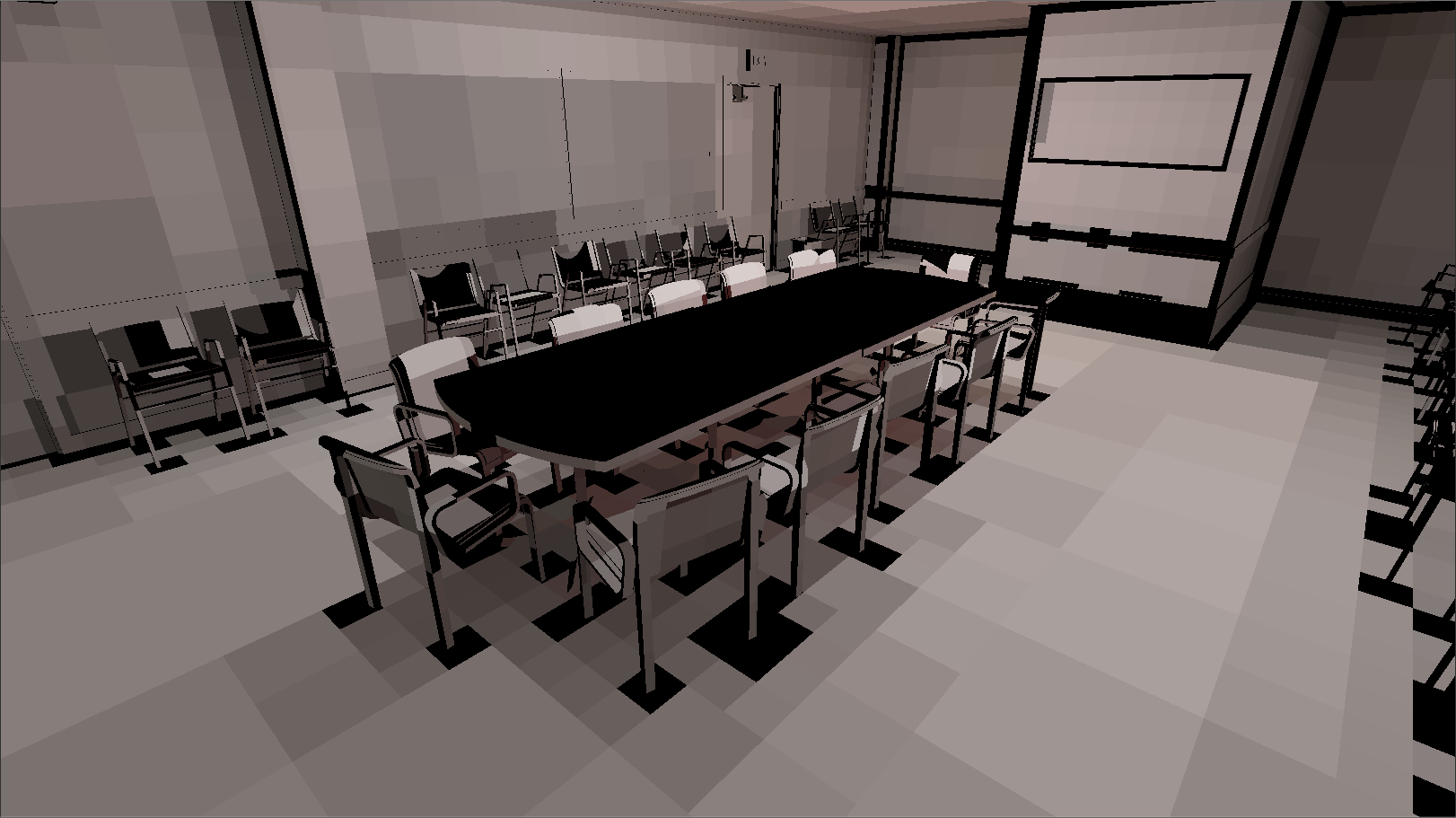ReGGI, as defined by Magro et al. [1][2] is a cloud-based rendering platform that reduces response times present in other cloud gaming platforms by allowing the client to perform part of the rendering. The client only renders the light cast directly from a light source to a surface (i.e., direct lighting). Meanwhile, the server calculates the light reflected off other surfaces and stores the results in a 3D grid, which is sent to the client. OctGI tries to look at how this grid structure could be modified to improve image quality and decrease network requirements.
Two approaches were chosen, the first of which was to modify the grid to store more than two light values per cell. This would allow the client to correctly illuminate cells containing small objects with many differently oriented surfaces, such as chair legs. The second approach was to allow the server to adjust the cell size according to the amount of detail present in a particular region of the scene, by using an octree.
Upon start-up, the server would split the scene into cubic regions, and attempt to detect surfaces within each one. Subsequently, for each non-empty region the server would produce a representative coordinate, which is inserted into the octree. Should the server identify adjacent surface points with similar orientations, it could group them to save bandwidth. For example, for a conference-room scene, ReGGI would generate a grid with 20800 cells, but an octree with a similar resolution only requires 9041 nodes (see Figures 1 and 2).
Once a client connects, it would receive the octree structure from the server and whenever the scene’s lighting changes, the server sends updates to modify the client’s octree. The octree data is then interpolated on the client to reconstruct the final image. The evaluation carried out on ReGGI was repeated for OctGI to determine the impact of these changes.


References/Bibliography
[1] M. Magro, K. Bugeja, S. Spina, and K. Debattista, “Interactive cloud-based global illumination for shared virtual environments,” in 2019 11th International Conference on Virtual Worlds and Games for Serious Applications (VS-Games), pp. 1-8, 09 2019.
[2] M. Magro, K. Bugeja, S. Spina, and K. Debattista, “Cloud-based dynamic GI for shared VR experiences,” IEEE Computer Graphics and Applications, vol. 40, no. 5, pp. 10-25, 2020.
Course: B.Sc. (Hons.) Computing Science
Supervisor: Dr Sandro Spina
